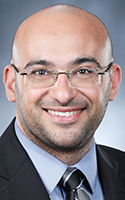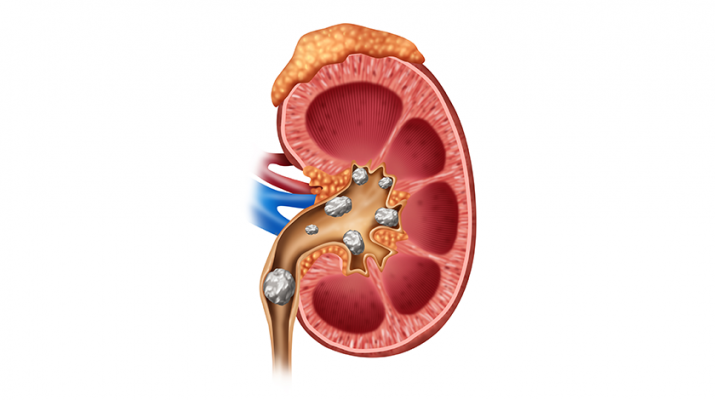By Mahmoud Chehab, M.D.

Kidney stone disease or nephrolithiasis is a common problem in the developed world. Currently, in the US it is estimated that one in 10 Americans will have a kidney stone at some point during their life time. Each year more than half a million people go the emergency room due to pain from kidney stones. In general, Caucasians and males are more likely to develop a kidney stone but the number of women getting a kidney stone is on the rise.
Kidney stones are mineral deposits that form in the kidney and may travel down to the bladder through the ureter. Most of the time while the stone travels down the ureter it causes some obstruction in the flow of urine to the bladder causing the urine to back up in the kidney causing swelling of the kidney or hydronephrosis, which causes pain. Sometimes the stone causes complete obstruction and the urine from the kidney becomes trapped and could get infected causing a urinary tract infection that could lead to sepsis and death, if not treated in a timely fashion. Some stones remain in the kidney and might grow over time, others remain dormant and do not change in size.
There are different types of stones but the most common stone in the U.S. is made out of calcium. Other stones could be made out of uric acid or cystine or a combination of different types. The most common cause of kidney stones is a low urine volume caused by not drinking enough fluids that lead to dehydration and concentrated urine. In hot weather sweating also leads to dehydration if fluid intake is not increased. A general rule is to drink about 100 ounces of fluid a day to maintain a urine production of two-thirds of gallon per day. It is recommended to replace dark soda products and drinks rich in tea with liquids rich in citrus products like orange juice and lemonade. Diet also plays a role in forming kidney stones. A diet rich in animal protein such as beef, fish, chicken and pork may increase the risk of forming calcium and uric acid stones. Diets with high oxalate levels such as tea, spinach and chocolate could also increase the risk of forming stones. There is also certain bowel conditions such as diarrhea or a history of gastric bypass that leads to kidney stone formation.
The way to diagnose a kidney stone is by imaging, usually an X-ray, a CT scan or kidney ultrasound. If a stone is growing in size over time or causing uncontrolled pain or obstruction is present then intervention may be indicated. There are other conditions that also require intervention. There are different ways to manage kidney stones depending on the type of stone that might be present, sometimes we use dissolution therapy to dissolve uric acid stones, other times we use laser to break the stones down into small pieces using endoscopic techniques and the stones are then removed with a basket or dusted into sand that will passed in the urine. If the stone is visible on X-ray, shockwaves could be used to break down the stone into smaller pieces that then pass in the urine. Shockwave therapy is the least invasive method to break down the stone but some stones are hard and may not break, requiring further intervention with more invasive methods. In case of large stones or multiple stones, percutaneous nephrolitotomy or PCNL is utilized to make a half-inch incision in the back to enter the kidney with a rigid telescope and remove large stone fragments.
If you had a stone your chance of having another stone over the next 10 years is about 50 percent. Kidney stones require follow up and management to prevent increase in size and recurrence. If you have experienced a kidney stone before or feel you might have a stone I recommend you have a visit with a urologist for further evaluation.
Physician Mahmoud Chehab is a graduate of Upstate Medical University and currently serves as an assistant professor in the department of urology at Upstate University Hospital. He also practices and operates at Cortland Regional Medical Center. To reach him,
Call 607-428-5757.

